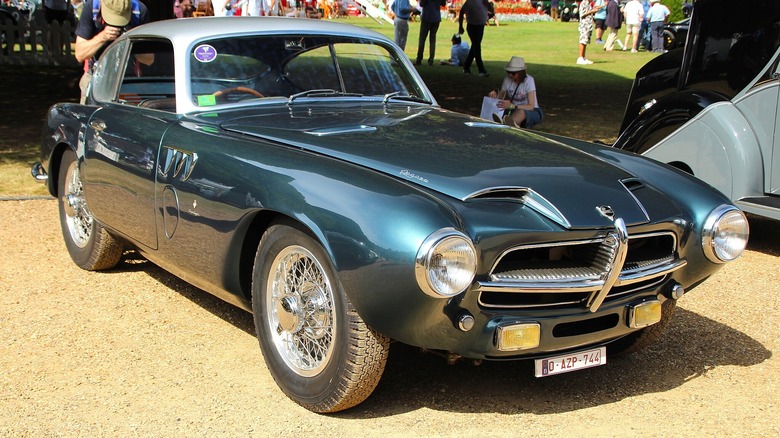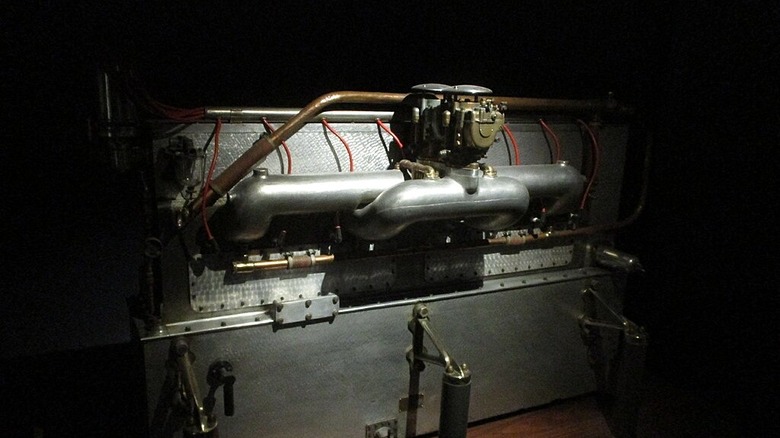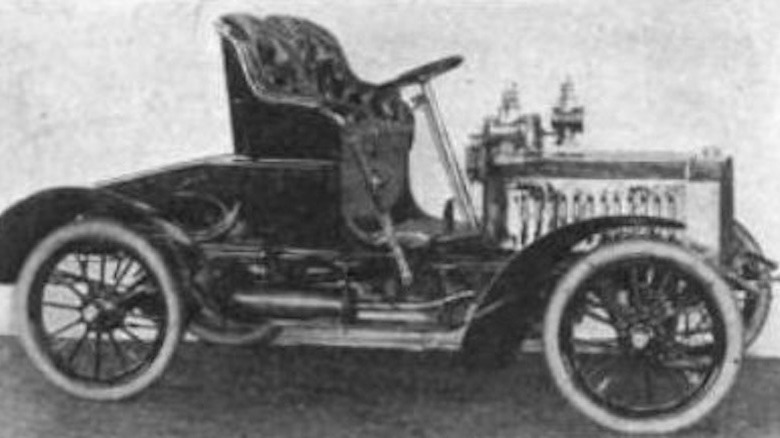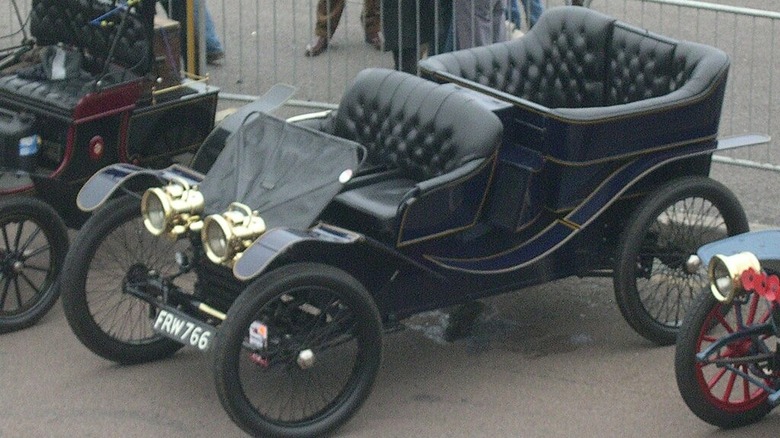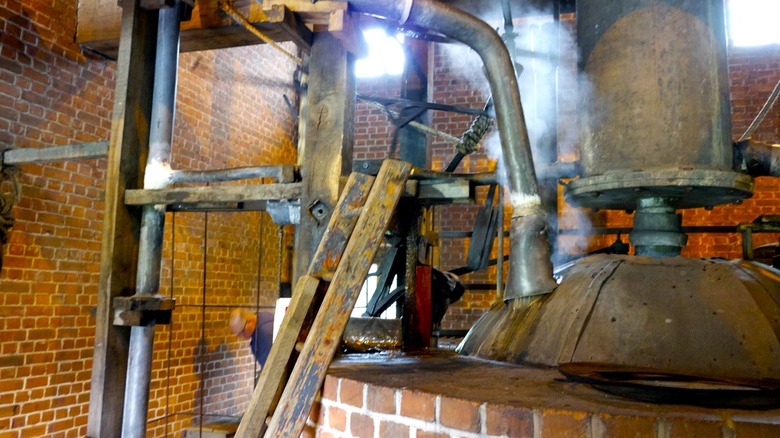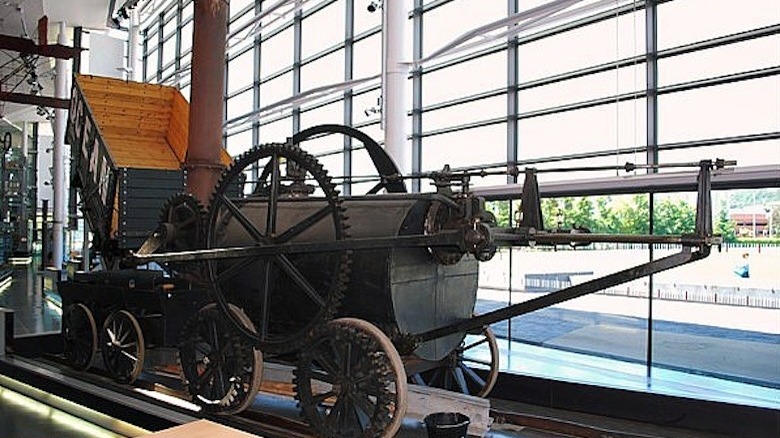5 Of The Rarest Antique Engines (And What They Were Used For)
Automobiles have been around in some form for around 150 years. In that time, countless combustion engines have been produced by manufacturers all over the globe. From flat-four engines to massive V12s — and everything in between. Innovations that enhance how engines perform evolve every year. Some engines have managed to endure — utilized across decades for a variety of different vehicles. Other engines only ever appeared once in a special edition, one-off vehicle that was never even made to be on the market. Most engines last for a few years before the manufacturer either improves it or replaces it with something more advanced.
Some of these machines ended up getting lost to time. They could be from companies that no longer exist, or maybe they just made very little impact on the world when they were in production. Here, we have five engines that are extremely difficult to get your hands on nowadays.
[Featured image by MrWalkr via Wikimedia Commons | Cropped and scaled | CC BY-SA 4.0]
Bugatti Royale 12.8L inline-8 engine
When we think of large engines, we probably think of something like Ford's 7.3 liter Godzilla V8. Back in the early days of the automobile, you would see some engines nearly twice the size of these current large engines and not think twice about it. For instance, Bugatti designed a 12.8-liter monster back in the late 1920s that was a true behemoth and one of the most notable inline-8 engines ever built.
The company's founder and designer, Ettore Bugatti, had created an engine even larger this beforehand — a 14.7-liter aircraft engine that could generate up to 300 horsepower. Bugatti then adapted this airplane engine into something that would work for a production car. The engine ended up being the Bugatti Type 41, also known as the Bugatti Royale.
Despite its slightly smaller size compared to the aircraft version, it was still able to generate up to 300 horsepower, necessary to pull the car's whopping 3.5 ton weight. To function properly, it needed 23 liters of oil and 47 liters of coolant. In total, six Bugatti Royales were manufactured between 1927 and 1933, and only four were sold. In 1987, a Bugatti Royale sold at auction for $9.8 million, the most for any car at the time, and that record would stand until 2008.
[Featured image by Arnaud 25 via Wikimedia Commons | Cropped and scaled | CC BY-SA 4.0]
Graham-Fox Compound three-cylinder engine
At the turn of the 20th century, engineers and designers were still trying to figure out the best way to construct a combustion engine for an automobile, and would experiment with odd designs to see if they worked. One such design was for a car that would come to be known as The Compound.
The engine was first built all the way back in 1903 by D. Fox Graham for the Graham-Fox Motor Company. The company was subsequently bought by the Eisenhuth Horseless Vehicle Company, and this engine became the centerpiece for The Compound car for Eisenhuth. It had three cylinders of different sizes, with the middle one being larger than the two on either side. The outer cylinders would operate alternately, and instead of their exhaust going into the air as you would expect, it would be collected in that center cylinder. That exhaust gas would expand and push down on the piston, effectively "compounding" the gas — which is how it gets its name. The hope was that it would improve efficiency and make the engine quieter.
The Compound was only commercially produced for three years, as the company ended up going bankrupt in 1907. With a short production window and being over a century old, these engines are hard to come by.
[Featured image by Unknown Author via Wikimedia Commons | Cropped and scaled | Public Domain]
Lanchester flat-twin engine
Staying around the turn of the 20th century, we're looking at another engine design we rarely see in automobiles anymore — but this doesn't mean it has become obsolete. Instead, this tends to be an engine used more often in motorcycles. That engine is a flat-twin engine created by the Lanchester Motor Company. Although that name may not be very familiar to you, Lanchester was actually the first producer of cars in Britain. The development of this two-cylinder engine goes all the way back to 1896, three years before the Lanchester Brothers — Frederick, George, and Frank — had even formally established their Motor Company. Originally, Frederick Lanchester worked on a single-cylinder engine but quickly developed a flat-twin version of it afterwards. However, it would not be until 1900 until these really made their way into the company's production cars.
The first car designed to use this engine was called the Lanchester Phaeton, and it housed the 10 horsepower engine between the two front seats. Over the next few years, this engine was improved to provide more power, with a 12 hp model appearing in 1901. But there was only so much more power Lanchester could get out of a flat-twin engine, and it developed a four-cylinder unit for 1904. The time of the Lanchester flat-twin was over, with an estimated 300 to 400 units produced.
[Featured image by Clive Barker via Wikimedia Commons | Cropped and scaled | CC BY-SA 2.0]
Newcomen Engine
Engines have been used throughout history for a lot more than making automobiles run, and they predate the invention of the automobile by nearly 200 years. If you thought car engines from the early 20th century were antique, they are positively contemporary compared to engines used by some factories and trains. One of these engines is known as the Newcomen engine, which was first invented all the way back in 1712 by its namesake, Thomas Newcomen.
Although it was not the first steam-powered machine in history – as those go back thousands of years – the Newcomen engine was the first steam engine to utilize the piston and cylinder setup that engines still use to this day. At the time, the Newcomen wasn't exactly rare, as around 1,500 were ultimately produced throughout the 1700s, but by today's manufacturing scale, that's not a lot.
Primarily, its use was to pump water out of mines, and it could pump about 600 gallons worth of water per minute. However, James Watt introduced his own improved design of the Newcomen in 1769. The Watt steam engine drastically increased fuel efficiency by minimizing heat loss, and improving power output. This left the Newcomen in the past, and the remaining units are now museum pieces.
[Featured image by Peter Skynner via Wikimedia Commons | Cropped and scaled | CC BY-SA 2.0]
Trevithick engine
High-powered steam engines have been used for so many different types of machines, but none of them are as iconic as those used in locomotives. The locomotive steam engine can be traced back to an Englishman by the name of Richard Trevithick. At the turn of the 19th century, Trevithick created the first high-pressure steam engine. The Watt engine was still a fairly low-pressure piece of equipment, and by using high pressure steam to expand the cylinder, he found he could create a more powerful engine that was also smaller and lighter than its predecessors, and could be easily transported.
At first, Trevithick used these new engines for carriages that he constructed, but he quickly pivoted to locomotives on rails, debuting the first steam-powered train in 1804. It had the ability to haul ten tons of iron and 70 passengers across five wagons. Granted, it took a little over four hours to complete a nine-mile journey, but that was still an improvement over previous methods..
Over the next few years, Trevithick would only produce two more steam locomotives, including the Catch-me-who-can, but the cast iron rails they ran on couldn't properly support their weight, leading him to modify his steam engine for other uses like threshing. Trevithick could never find consistent financial support, leading him to South America and ultimately dying in poverty.
[Featured image by Hugh Llewelyn via Wikimedia Commons | Cropped and scaled | CC BY-SA 2.0]
